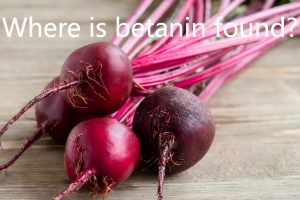Where is betanin found?

Where is betanin found? This is a common question for those interested in natural food colorants and plant-derived compounds. Betanin is a red-violet pigment that belongs to the betalain family. It is widely used as a natural coloring agent in food, cosmetics, and pharmaceuticals due to its vibrant hue and potential antioxidant properties.
Betanin is most commonly found in beetroots (Beta vulgaris), which serve as the primary natural source of this pigment. When you slice open a beetroot and notice its deep red juice, you are seeing betanin in action. Because of its strong coloring ability, beetroot extract is frequently used in food production for items such as yogurts, beverages, candies, and sauces.
Besides beets, betanin can also be found in other plants that produce betalains. These include certain cacti species, amaranth, and Swiss chard. However, the concentration of betanin in these plants is typically lower compared to beetroot, making beets the most economical and widely used source for industrial applications.
In addition to food uses, betanin is being researched for its health benefits. Studies suggest that it may have antioxidant, anti-inflammatory, and detoxifying properties. This makes beetroot juice and supplements containing betanin popular among people seeking natural wellness support.
To summarize, the answer to the question “Where is betanin found?” is straightforward: primarily in beetroot, and to a lesser extent in other betalain-rich plants like amaranth, Swiss chard, and cacti. Whether in natural food coloring, health supplements, or functional foods, betanin continues to attract attention for both its practical uses and potential health benefits.


